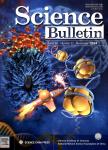Chronosequencing methanogenic archaea in ancient Longji rice Terraces in China
Chronosequencing methanogenic archaea in ancient Longji rice Terraces in China作者机构:State Key Laboratory of Soil and Sustainable AgricultureInstitute of Soil ScienceChinese Academy of SciencesNanjing 210008China School of Civil Engineering and GeosciencesNewcastle UniversityNewcastle upon Tyne NEt 7RUUK State Key Laboratory of Environmentul GeochemistryInstitute of GeochemistryChinese Academy of SciencesGuiyang 550002China State Key Laboratory of Lake Science and EnvironmentNanjing Institute of Geography and LimnologyChinese Academy of SciencesNanjing 210008China
出 版 物:《Science Bulletin》 (科学通报(英文版))
年 卷 期:2017年第62卷第12期
页 面:879-887页
核心收录:
学科分类:070903[理学-古生物学与地层学(含:古人类学)] 0709[理学-地质学] 07[理学]
基 金:supported by National Natural Science Foundation of China(41671267,41430859 and 41271256) the CAS Strategic Priority Research Program Grant(XDB15020103) National Key R&D Program(2016YFD0200306) National Basic Research Program(973 Program)(2014CB954500) Knowledge Innovation Program of Chinese Academy of Sciences(ISSASIP1639)
主 题:Ancient paddy soilAnthropogenic activitiesPalaeosol microorganismsLongji Terraces
摘 要:Chronosequences of ancient rice terraces serve as an invaluable archive for reconstructions of historical human-environment interactions. Presently, however, these reconstructions are based on traditional soil physico-chemical properties. The microorganisms in palaeosols have been unexplored. We hypothesized that microbial information can be used as an additional proxy to complement and consolidate archaeological interpretations. To test this hypothesis, the palaeoenvironmental methanogenic archaeal DNA in Longji Terraces, one of the famous ancient terraces in China, dating back to the late Yuan Dynasty(CE1361–1406), was chronosequenced by high-throughput sequencing. It was found that the methanogenic archaeal abundance, diversity and community composition were closely associated with the 630 years of rice cultivation and in line with changes in multi-proxy data. Particularly, the centennial-and decadalscale influences of known historical events, including social turbulences(The Taiping Rebellion, CE1850–1865), palaeoclimate changes(the Little Ice Age) and recorded natural disasters(earthquakes and inundation), on ancient agricultural society were clearly echoed in the microbial archives as variations in alpha and beta diversity. This striking correlation suggests that the microorganisms archived in palaeosols can be quantitatively and qualitatively analyzed to provide an additional proxy, and palaeo-microbial information could be routinely incorporated in the toolkit for archaeological interpretation.



